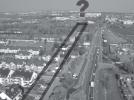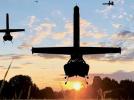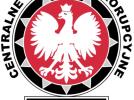Trans States E145 at Ottawa on Sep 4th 2011, runway excursion, main gear collapse
The Canadian TSB have released their final report concluding the probable causes of the accident were:
Findings as to causes and contributing factors
1. Heavy rainfall before and during the landing resulted in a 4–6 mm layer of water contaminating the runway.
2. The occurrence aircraft’s airspeed during final approach exceeded the company-prescribed limits for stabilized approach criteria. As a result, the aircraft crossed the runway threshold at a higher than recommended VREF airspeed.
3. A go-around was not performed, as per standard operating procedures, when the aircraft’s speed was greater than 5 knots above the appropriate approach speed during the stabilized portion of the approach.
4. The application of engine thrust just before touchdown caused the aircraft to touch down 3037 feet from the threshold at a higher than recommended airspeed.
5. The combination of a less than firm landing and underinflated tires contributed to the aircraft hydroplaning.
6. The emergency/parking brake was applied during the landing roll, which disabled the anti-skid braking system and prolonged the skid.
7. The aircraft lost directional control as a result of hydroplaning and veered off the runway.
Findings as to risk
1. The typical and frequently used technique for differential braking that pilots are trained to use may not be effective when anti-skid systems require different techniques.
2. If aircraft electrical power is applied with an active fuel leak, there is a risk that an electrical spark could ignite the fuel and start a fire.
3. The use of non-grooved runways increases the risk of hydroplaning, which may result in runway excursions.
4. If there is an absence of information and training about non-grooved runways, there is a risk that crews will not carry out the appropriate landing techniques when these runways are wet.
5. The use of thrust reversers reduces the risk of runway excursions when landing on wet runways.
6. If pilots do not comply with standard operating procedures, and companies do not assure compliance, then there is a risk that occurrences resulting from such deviations will persist.
Other findings
1. The central maintenance computer was downloaded successfully; however, there were no data present in the memory unit.
2. Although the Transportation Safety Board was able to download high-quality data from the flight data recorder, the parameters that were not recorded due to the model type and input to the flight data recorder made it more difficult to determine the sequence of events.
The TSB reported that the captain (ATPL, 8,000 hours total, 4,000 hours on type) was pilot flying, the first officer (ATPL, 4,800 hours total, 3,800 hours on type) was pilot monitoring.
The crew opted to perform an ILS approach to runway 32, although runway 25 was active. Standard operating procedures by the airline did not permit to use runway 07/25 when damp or wet, the weather forecast indicated rain showers. The crew computed their Vref at 128 KIAS and based on weather data reported chose a Vapp of 133 KIAS.
The aircraft positioned to intercept the localizer and glideslope, about 2 minutes prior to intercepting the glideslope air traffic control advised that it had begun to rain heavily at Ottawa. The crew intercepted glideslope, lowered the landing gear and set the flaps to 22 degrees, tower reported the winds from 310 degrees at 10 knots.
The aircraft crossed the final approach fix 4.3nm before touchdown slightly above glideslope at 174 KIAS. Descending through 1000 feet AGL, 155 KIAS, the flaps were extended to 45 degrees, tower advised the winds had changed to 320 degrees magnetic gusting up to 20 knots, the crew decided to increase their Vapp to 140 KIAS to compensate for the gusts.
The aircraft crossed the runway threshold at 45 feet AGL and 139 KIAS, the intensity of rain increased forcing the crew to switch the wind screen wipers to high, descending through 20 feet the crew initiated the flare and reduced engine thrust.
Just before touchdown a heavy downpour obscured the view of the crew, they perceived the aircraft was dramatically increasing its sink rate and the captain applied maximum thrust on both engines resulting in a master caution and a warning that flaps were not in takeoff configuration. The maximum thrust was maintained for about 7 seconds.
The aircraft touched down smoothly about 2700 feet past the runway threshold at 119 KIAS, the airspeed however was increasing and the aircraft became airborne again. The aircraft touched down a second time at 3037 feet past the runway threshold at 125 KIAS and about 20 feet to the right of the runway center line, the speed peaked at 128 KIAS, the nose wheel touched down and the thrust levers were pulled to idle. Both outboard spoilers immediately extended after touch down, the inboard spoilers deployed 8 seconds later but retracted abotu 4 seconds later again, the outboard spoilers retracted about 20 seconds after deploying.
After the nose wheel had touched down the captain applied maximum braking, the crew however noticed almost instantly that the aircraft began skidding. The captain requested the first officer to apply maximum braking, too, however no noticeable deceleration was felt and no significant brake pressure was indicated. Brake pressure suddenly increased to its maximum about 18 seconds after the outboard spoilers had extended, the aircraft skidded to the left with application of full right hand rudder remaining ineffective, a spray of water from the wheels rose up to 22 feet above runway surface and about 300 feet past the aircraft, the captain applied emergency braking however stowed the emergency brakes again after no noticeable deceleration was felt.
About 7500 feet down the runway the aircraft had yawed to the left nearly perpendicular to its direction of movement and was skidding sideways.
About 8120 feet past the runway threshold the nose wheel exited the paved surface of the runway, the aircraft was still moving at about 53 knots. The aircraft came to a stop at a heading of 211 degrees magnetic with all gear just off the paved surface of the runway, the main gear had collapsed and the underside of the left wing had been damaged.
The crew performed an emergency shut down of the aircraft and consulted with the flight attendant, then decided to keep the passengers on board as there was no immediate threat to the aircraft or passengers.
Observing the aircraft going off the runway tower in the meantime had pushed the crash alert button, emergency services responded and first vehicles arrived at the aircraft about 3 minutes after the crash button was pressed. Emergency services told the crew upon a first examination that there was a fuel leak, which prompted the captain to order an immediate evacuation of the aircraft. Passengers left the aircraft through the main cabin door about 12 minutes after the aircraft had come to a stop and were guided along the runway by emergency personnel. Emergency services, after all passengers had left the aircraft, foamed the area where the fuel leak had been observed.
The TSB reported that 14 of 26 Embraer ERJ-145s of the operator had been equipped with thrust reversers, the accident aircraft however had not yet been equipped with thrust reversers. Thrust reversers had been shown to play an important role in reducing accelerate-stop distances especially on wet or contaminated runways and to provide a decelerating force independent of runway friction. The TSB stated: "When landing on a runway with poor braking action, the effect of reverse thrust can make a dramatic difference and has positively contributed to the transport category airplane fleet’s accelerate–stop safety record."
The TSB stated a post flight examination showed evidence all four main wheel tyres had experienced reverted rubber hydroplaning.
The TSB stated: "The total accumulated rainfall from 1520 until the aircraft landed at 1529 was approximately 10.2 mm. During this period, a review of the 5-minute cumulative data reveals rainfall intensity of 9.6 mm per hour over the first 5 minutes of rainfall, increasing to approximately 67.2 mm per hour over the next 5 minutes, and finally 45.6 mm per hour at the time LOF3363 landed. The TSB calculated the average depth of water that was on the runway from the time the aircraft touched down until it exited the side to be 4–6 mm."
The TSB analysed that there was no indication that any aircraft system contributed to the accident. There was also no evidence that the crew's performance was degraded in any way.
The TSB analysed that the aircraft per standard operating procedures would have been required to be fully configured and within the parameters for stabilized approach at 1000 feet AGL. However, when the aircraft was descending through 1000 feet AGL, the flaps were still at 22 degrees and just selected to 45 degrees, the airspeed was 155 KIAS rather than within the margins for Vapp (128 to 138 KIAS).
The TSB analysed: "The aircraft crossed the threshold at 139 KIAS, 11 knots above VREF. Immediately before touchdown, at about 5 feet agl, the captain selected maximum thrust on the engines. This action resulted in increase in the airspeed and extension of the flare to a touchdown point at 3037 feet, which was 1537 feet beyond the TSA-recommended maximum touchdown zone of 800 to 1500 feet beyond the runway threshold. Although the aircraft in this occurrence went off the side of the runway, the combination of excessive airspeed crossing the runway threshold and a delayed touchdown point significantly decreases the distance available to safely stop an aircraft."
The TSB analysed: "The proper landing technique as described in TSA’s SOPs for landing on a wet runway is a firm landing, at the recommended speed and within the specified touchdown zone. This technique ensures that the tires break through the film of water on the runway, so that there will be a positive spin-up of the wheels to ensure that the anti-skid brake system and spoiler system operate properly. For this occurrence, the approach and landing technique used to land the aircraft was unchanged from the technique normally used for all of the landings performed by the captain, which increased the likelihood that the wheels would not break through the film of water on the runway."
The TSB analysed that the captain applied steady braking, which is recommended technique for best braking performance. However: "The TSA SOPs state that attempting to modulate the brakes while the anti-skid is operating should generally be avoided unless required to maintain directional control. These instructions would suggest that, during a situation involving loss of directional control during hydroplaning, modulating the brakes (release and reapply) is an acceptable method."
The TSB analysed: "Three of the 4 main tires were underinflated, which lowered their hydroplaning speed. When landing on a wet runway with underinflated tires, there is an increased risk of hydroplaning and possible runway excursion."
The TSB analysed that all tyres experienced hydroplaning and stated: "Almost immediately after landing, the outboard spoilers deployed, indicating that the speed of either the no. 2 or the no.4 wheel (or both) was greater than 25 knots. About 20 seconds later, the outboard spoilers retracted, indicating that the speed of both wheels had dropped below 25 knots. The inboard spoilers deployed about 8 seconds after the outboard spoilers. The aircraft experienced hydroplaning almost immediately, and hydroplaning would prevent or delay the wheels from spinning up. Since no discrepancies were noted with the spoiler system components, it is likely that the no. 1 and the no. 3 wheel speeds were below 25 knots for about 9 seconds after touchdown. The inboard spoilers retracted within about 4 seconds, indicating that the speed of both of these wheels had dropped below 25 knots."
The aircraft and tracks on soft ground (Photo: TSB):
Hydroplaning damage to one of the main tyres (Photo: TSB):
http://avherald.com/h?article=4426fd5b/0000














Komentarze